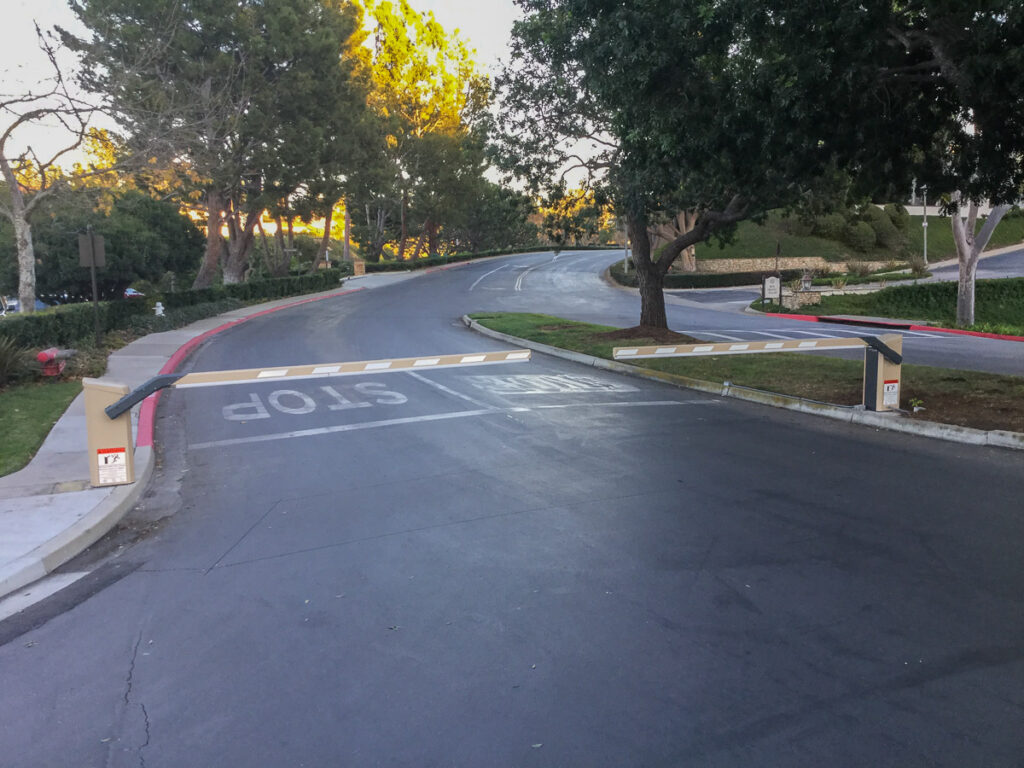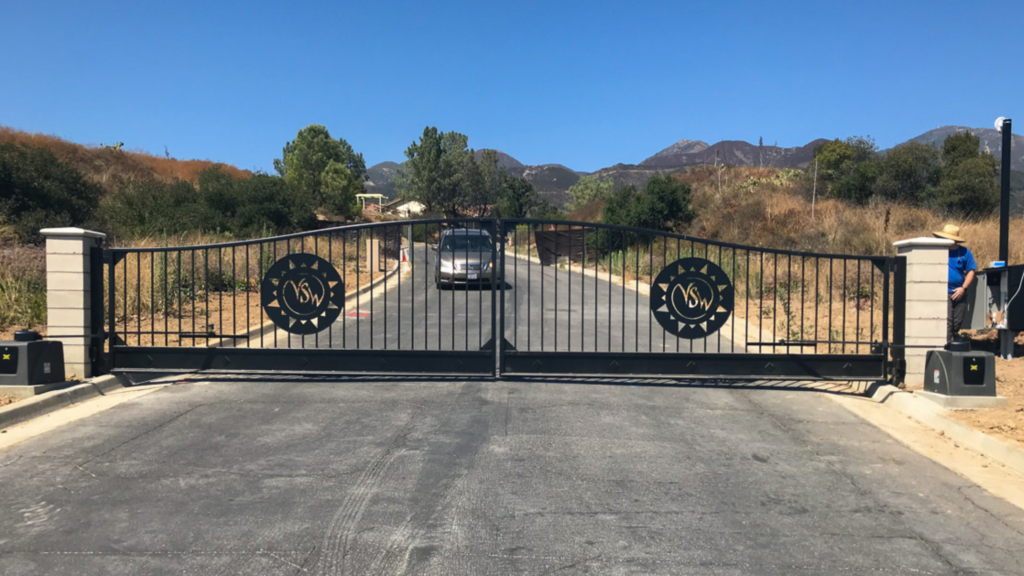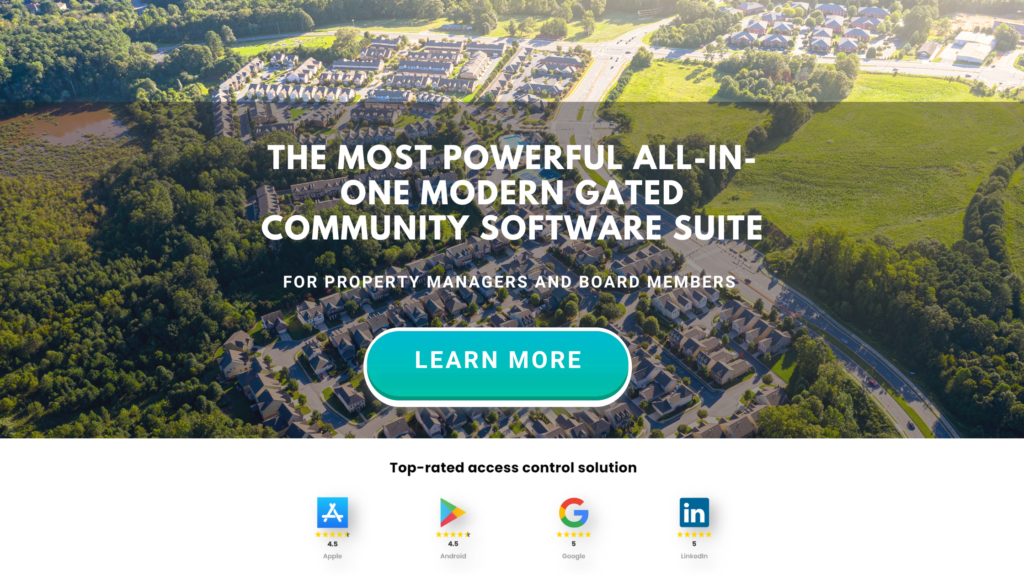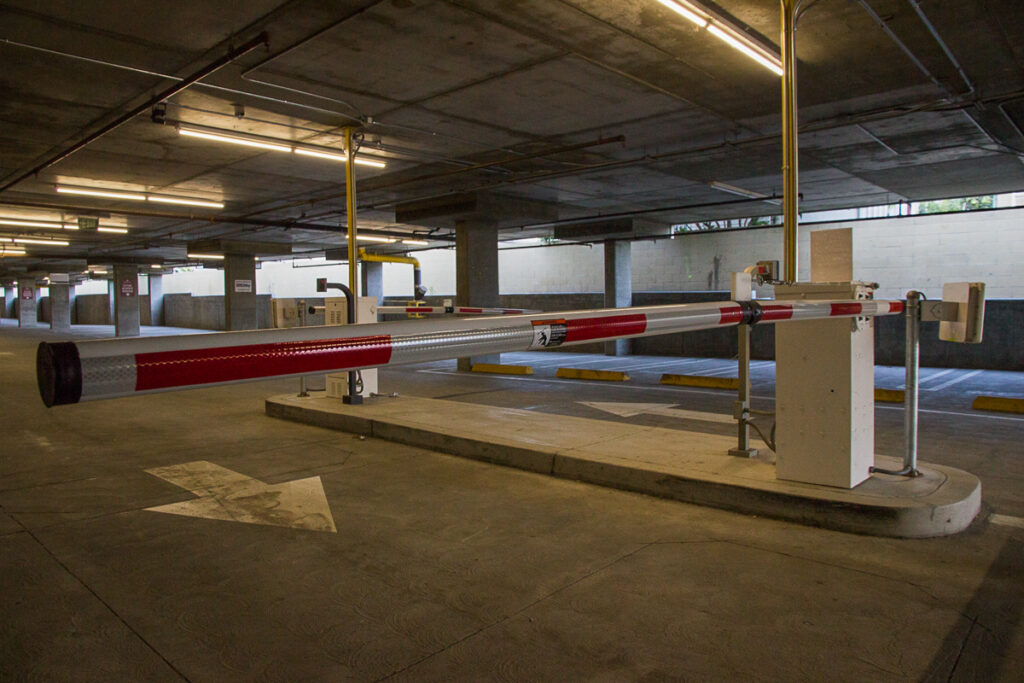Are you considering purchasing a barrier arm to add another level of security to your commercial or residential property? If so, you may have questions about how they work and what their benefits are.
Barrier arms are an ideal solution for areas with high traffic volume, visitor access, and as they can control access and regulate the flow.
However, it is important to note that this investment comes with installation costs too. This article will go over the benefits of barrier arms, different types available, and what to consider before making a purchase; arming you with all the information needed to make an informed decision and get the most out of your security system.
In this article we’ll discuss:
Factors to Consider When Choosing a Barrier Arm
Factors to Consider When Choosing an Automatic Barrier Arm
Factors to Consider When Choosing a Manual Barrier Arm
Choosing the Right Barrier Arm for Your Facility
Common Mistakes To Avoid When Choosing a Barrier Arm
Best Practices for Using Barrier Arms
What is a barrier arm?
The barrier arm is an efficient security solution for properties with limited access. This device consists of a pole, or ‘arm’, which extends across the width of any gate or entrance to control the flow of traffic in and out.

Barrier arms are a popular type of security installation found in parking lots, apartment complexes, office buildings and other restricted areas. These systems provide a number of advantages over other types of security installations; they’re user–friendly, require minimal maintenance and can easily be integrated into existing systems.
In addition to this, they are highly visible and serve as an effective deterrent for any would–be thieves or intruders – making them especially useful for parking garages that rely heavily on the income generated from controlling how many vehicles enter the garage.
What is the difference between a fence, gate, and barrier arm?
Barrier arms are a single bar that spans an opening, raised and lowered between each vehicle passing through the checkpoint. They can be designed to detach in the event of a car accident and serve as an efficient way to manage traffic flow, quickly admitting vehicles.
Gates are typically constructed of iron and can be as simple as vertical or horizontal bars as well as elaborate decorative ornamental gates. They cover an entire opening or entrance; they’re heavier and more difficult to operate than barrier arms but far more durable.

Fences are more permanent barricades that line the perimeter of a property – typically immovable with the exception of smaller temporary roadblocks. Designed to keep people and animals out as well as separate areas within a property, it helps significantly to understand the differences between a fence, gate, and barrier arm before making a purchase.
The type of security gate you require will depend on the size and layout of your property, as well as the level of security you are aiming to achieve.

Barrier Arm Gate Basics
It is vital to understand the functioning of barrier arms, as they are mechanical devices powered by either electric motors or hydraulic systems. They can be raised and lowered via a lever, with adjustable speed depending on traffic flows.
Most have a safety feature that prevents them from closing on any objects in their path, making them a reliable form of security.
Automated arms are powered by an electric motor or hydraulic system and are more common than manual arms. They can be programmed to open and close automatically at specific times of the day or in response to particular events.
Manual arms rely on a person manually pushing them up or down, making them cheaper to install but more arduous to operate than automated arms.
They are best suited for areas with low traffic levels, or where access to the property needs to be tightly controlled.
Barrier arms and tailgating
Barrier arms are an effective way to stop tailgating, when one vehicle attempts to gain unauthorized access by following another. Most drivers will be dissuaded by the potential for damage caused if the arm lowers onto their car’s hood; however, some may still try to breach security in this way.

To prevent this, many are equipped with sensors that detect when two cars attempt simultaneous entry. In such cases, the arm automatically lowers and stops the second vehicle – ensuring no unauthorized vehicles can enter the property.
This is particularly important in residential areas – it’s often used in HOA (HomeOwners Association) or gated communities to keep them safe and secure from intruders. These security systems are typically integrated with existing access systems, such as RFID access control, and barrier arms come with an intercom for visitors to request access.
This extra layer of security helps protect properties from unwanted visitors.
For residents and or frequent visitors, an RFID (Radio–frequency Identification) system is often installed in tandem with the barrier arm. This system uses a small transponder chip placed in each vehicle’s windshield to detect when the car approaches and open the barrier arm automatically or be manually controlled if necessary.
Commercial areas may opt for a monetized entry system, requiring each driver to either show identification or pay a fee to gain access; many of these systems come with cameras so that guards can monitor who is entering and quickly resolve any issues.
For parking garages, barrier arms are essential for accurately charging vehicles and protecting against revenue loss – up to $50 per car – from cars slipping in without paying.
Without proper security measures, businesses will see their income plummet; barrier arms provide an effective deterrent as they detect and prevent multiple cars from passing through.
Benefits of Barrier Arms
Barrier arms provide an optimal solution for security, traffic management and the prevention of tailgating. Below are several advantages that make them a better choice than other security measures:
- Low maintenance: Unlike most other security systems, they require very little maintenance. The arms are easy to operate and can be set up in minutes.
- Adaptable: They are a great choice for businesses that need to control traffic flow and access, but also need to adapt quickly to changes in traffic or access requirements.
- Visibility: They are highly visible and act as a deterrent for would-be intruders.
- Integration: Barrier arms can easily be integrated into existing security systems, to provide an extra layer of protection.
- User-friendly: They are relatively easy to operate, without the need for intensive training.
- Automated operation: Automated arms can be operated remotely or with a button or card. This makes them an ideal choice for properties that require fast access control.
- Cost-effectiveness: Barrier arms require minimal maintenance and energy consumption, making them a cost-effective security solution.
Barrier arms are a great option for security and traffic control applications, offering numerous advantages.
Factors to Consider When Choosing a Barrier Arm
When choosing a barrier arm for your property, certain factors must be taken into account.
How long is a barrier arm?
Barrier arms come in various sizes, ranging from 6 feet short to 30 feet long and 3–4 feet high.

What material should you use?
When selecting a barrier arm, it’s important to consider the size of the opening and amount of clearance needed for different types of vehicles. Common materials used in their construction include steel, aluminum, wood and PVC.
Aluminum is generally considered by experts as the best material for barrier arms, due to its durability and lightweight.
What are the power requirements?
When choosing a material for your robotic arm, you should consider the budget and the environment in which it will be installed. Additionally, assess how much power can be reasonably allocated toward powering the arm.
Most manufacturers offer models that can be powered by either electricity or hydraulics – but confirm the power requirements (both for the main power source and operational voltage) before making a purchase.
Installation and maintenance
Hydraulic motors are able to withstand greater impact than electrical motors, require very little maintenance after installation, though they may malfunction in colder climates – so temperature control units are recommended.
Electrical motors typically consume more power than hydraulic ones and are slower; however they tend to be quieter and easier to maintain.
Whether you choose an automatic or manual barrier arm for your property will further affect these factors – automatic arms are convenient but can be costly, while manual arms require more effort from users but can provide a cost–effective solution.
Automatic Barrier Arms
Automatic barrier arms are engineered to open and close without any manual input, apart from supplying power or occasional interaction.
Featuring self–closing mechanisms, obstacle sensors and wireless remote access for added convenience, these arms also come with multiple safety mechanisms such as an emergency stop button, an emergency manual release lever, and a timer that will cause the arm to close automatically if left open for too long.

Advantages of automatic barrier arms
For even greater control over your security system, features like RFID readers and automated ticketing systems can be installed – allowing you to customize it to meet your specific needs and property requirements.
Automatic arms provide an increased level of efficiency due to their lack of manual intervention, making them especially valuable in high–traffic areas, where cars are passing through in a constant stream.
This eliminates the need for manual labor (or, at the very least, minimizes it), resulting in drastic cost reductions associated with securing a property.
Factors to Consider When Choosing an Automatic Barrier Arm
When looking to purchase an automatic barrier arm, you will need to consider:
- Technology: As with any product, you will need to be familiar with the various technologies available to you. Be sure to research the features and capabilities of the different models available, as well as their compatibility with existing security systems.
- Power Supply: Does your facility have enough power for the arm to operate on its own? If not, you may need to investigate additional power sources, or a model with a lower voltage requirement.
- Installation and Maintenance: Be sure to consider the cost of installing the arm and any associated costs, such as the cost to repair or replace any parts. You will likely need to hire an expert for the installation, which can range anywhere from $1,000 to $12,000.
Manual Barrier Arms
Manual barrier arms, usually operated by a guard or other personnel, require manual intervention to open and close the arm.
Advantages of manual barrier arms
Although remote control is now common, these manual barriers are often more cost–effective than automatic versions and easy to use with minimal training.
Manual arms are particularly well–suited for areas with low traffic due to their locking mechanism, which prevents them from being opened by unauthorized individuals while still providing an extra layer of security without the need for an automated system.
Factors to Consider When Choosing a Manual Arms
If you are looking to purchase a manual barrier arm, you’ll need to consider:
- Length and Height: Choose one that meets your size requirements and can accommodate the vehicles that will be passing through.
- Material: Remember that depending on the model you select, you may need to physically operate the arm. Consider the environment in which the barrier arm will be installed and choose the material that best fits your needs and budget.
- Installation and Maintenance: Same as an automatic arm, installation and maintenance costs should be taken into account. Manual barrier arms are slightly cheaper to install than automatic barrier arms, but the cost to hire a professional will still be a considerable amount.
Choosing the Right Barrier Arm for Your Facility
When deciding between an automatic or manual barrier arm, it’s important to consider the size, material, power requirements and installation/maintenance costs.
Take time to research which type will be most suitable for your needs.
Additionally, by evaluating your property and surroundings you can better determine what is best for you.
When determining the right automatic barrier arm for your facility, consider the traffic volume, security needs and available space on your property.

If there is high traffic volume in and out of your facility, an automatic barrier with a shorter timer would be more appropriate; for smaller entrances, opt for a shorter arm.
Make sure the arm selected is compatible with your existing security system and suitable for the environment in which it will be installed. Coordinating with Proptia experts to integrate other security software and features may also be beneficial.
How much do barrier arms cost?
The cost of an automatic or manual barrier arm can vary depending on several factors, such as the type of barrier arm, the length of the arm, the materials used, and the brand. Generally, manual barrier arms are less expensive than automatic ones. A basic manual barrier arm can cost anywhere from $100 to $1,000, while automatic barrier arms can cost anywhere from $1,000 to $10,000 or more.
The installation cost can also vary depending on the complexity of the installation, the location, and the materials used. On average, the installation cost of a barrier arm system can range from $1,000 to $5,000 or more, depending on the specific requirements and needs of the installation.
It’s best to consult with a professional installer or supplier to get a more accurate estimate of the cost of a barrier arm system and its installation based on your specific needs and requirements. Proptia partners with highly skilled security system installers across the country. We’d be happy to connect you with one in your area. Please reach out to us via our contact form here : Contact Proptia
Common Mistakes To Avoid When Choosing a Barrier Arm
With so many choices available, it’s easy to become overwhelmed. Unfortunately, a common mistake is not researching enough before making a selection; remember: cheaper isn’t always better – the weakest part of any security system is usually its most vulnerable element.
Additionally, don’t forget to consider your power requirements ahead of time – ensure that your arm will be installed in an area that can easily be connected to your property’s power source. If not you run the risk of incurring additional labor costs for the installer to trench and pull conduit to the location for power.
Regular maintenance and testing is also essential; if you don’t plan to do repairs yourself, make sure there is a professional in the area who is familiar with your model of barrier arm. After all, any security measure is only as effective as the attention it receives.
Installation and Maintenance
Ensuring your barrier arm is correctly installed and maintained is an essential part of any security system.
Professional installation is highly recommended for proper use and regular maintenance should be performed to ensure your arms are working correctly.
Regardless of the technician’s level of experience, it is important to always follow the manufacturer’s instructions when installing or operating any equipment.
Before beginning installation, you will need to choose an even area on your property that is made of concrete and free from any cables or pipes underground; excavating a post hole risks damaging them if they are present. Any cables or pipes should be moved prior to starting installation.
After measuring and marking the area where your barrier arm will be installed, the technician will begin drilling into the foundation – excavating a hole appropriate for anchoring before fixing it in place. The control panel for the arm is then properly installed along with all necessary wiring to power it.
After attaching and fastening it into place, calibrating its spring, sensors and testing its pivoting movement are completed to ensure proper operation from commands sent from the control panel.
For maintenance, you should coordinate with a technician (if not the same one who installed your barrier arm) to regularly inspect and service all components of the arm: power supply & motor; wiring; sensors & arm itself for signs of wear & tear.
They will need to lubricate any moving parts to reduce the risk of wear and tear, ensure detector and transmitter antennas are functioning properly, as well as fully clean both inside and outside surfaces of the barrier arm.
Best Practices for Using Barrier Arms
For optimal safety, proper deployment and use of your barrier arms is essential. Here are a few last pointers for using them:
- Install signs warning of the barrier arm to deter any potential trespassers.
- Install signs that notifty drivers the, “Barrier arm closes after every vehicle”.
- Make sure all staff are familiar with correct usage and maintenance of the barrier arm.
- Use a reliable power source to ensure the barrier arm doesn’t experience any technical difficulties.
- Always monitor the entrance of your property and be aware of any potential intruders.
- Train staff and visitors on the proper use of the barrier arm and any additional access systems.
- Use sensors and cameras to detect any attempted tailgating.
- Stay up-to-date on any maintenance that the barrier arm requires.
- Barrier arms should be kept at a safe height at all times, to reduce the risk of injury.
When selecting the ideal barrier arm for your facility, take into account its specific requirements and identify which model is best suited. When you have made your decision, work with an expert to guarantee correct installation and maintenance.
Final Thoughts
Barrier arms are an effective deterrent for unauthorized vehicles entering a property. The mere presence of these security devices is usually enough to stop drivers from attempting to tailgate or sneak in; they can also be integrated with existing surveillance systems and RFID chips.
There are various models available, including automatic and manual arms that protect your premises while controlling traffic flow.
Often times barrier arms are just one component of a larger security system and operation. Barrier arms may be a way to control access to staff and residents, control the access of visitors and service providers.
To get the most out of your barrier arms it’s important to consider security software that can consolidate your operation and take your barrier arms from just a barrier and turn them into a security system.
Proptia can turn your barrier arm into an enterprise–level security system for your entire property — everything ranging from visitor management, access control to license plate recognition. Whether you’re controlling access to one parking lot or managing a sprawling master planned community Proptia has a modular customizable solution that can mold to your security operation. Reach out to us today to learn more!
GET IN TOUCH
Schedule a Demo

Author: Nick Saraev
Nick is a tech-savvy freelancer with a passion for coding and a knack for writing. As a programmer by trade, he knows the ins and outs of the digital world, with a particular interest in PropTech and Security Tech. When he’s not tinkering with the latest software, you can catch him scaling mountains or unleashing his creative side on a canvas. .

